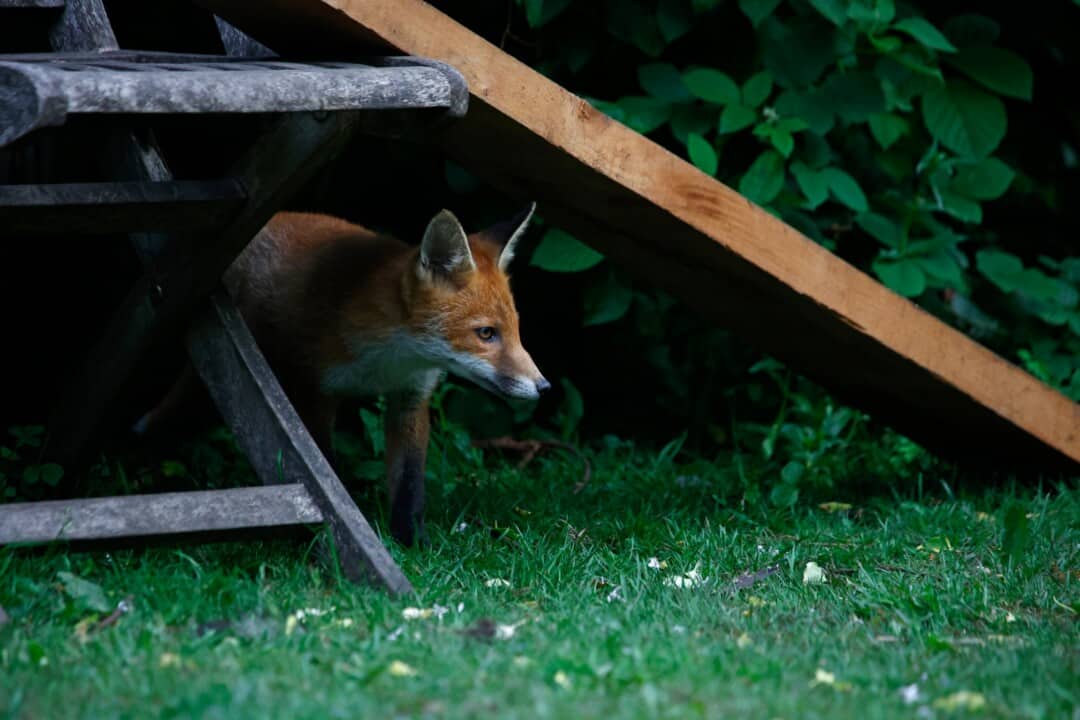*This post contains affiliate links. As an Amazon Associate, I earn from qualifying purchases. This means that if you buy something, I get a commission and you don’t have to pay anything extra. You can read more about my affiliates on my Affiliate Links Disclaimer page.
I LOVE animals, especially mammals. My love for animals is what made me want to become a wildlife biologist. How did I develop such a passion?.
From my yard! My parents took me exploring in our own front and backyard. Even though I didn’t grow up in the country and my family didn’t own a lot of land, I loved picking up rocks and looking for bugs all over.
Mammals tend to be people’s favorite animals and they are definitely all around us. Through citizen science-based camera trap research in school yards around the world and the suburbs of Raleigh and Washington, DC, we found that the diversity and abundance of mammals larger than a chipmunk are the same between wild and suburban areas. Abundance even peaked in suburban areas. This means that there are mammals all around us.
Foxes are beautiful, intelligent creatures that many homeowners would love to catch a glimpse of in their yards. However, attracting foxes takes more than just putting out food. Done irresponsibly, feeding foxes can lead to serious consequences for both the animals and your community. This article will explore humane, ethical ways to make your yard enticing for foxes without putting them at risk.
Know Your Local Fox Species
The first step is understanding what fox species live in your region. In North America, common foxes include the red fox, gray fox, kit fox, and arctic fox. Their habitat preferences, behavior, and diet vary somewhat between these species. Make sure any measures you take to invite foxes align with the needs of the native foxes in your area.
Remove Food Temptations
One of the worst things you can do is leave pet food outside or have easily accessible garbage Food conditioned foxes lose their natural foraging ability and can become nuisances or aggressive towards people, Keep all external food sources secured and cleaned up,
Provide Natural Shelter
Instead of food handouts create appealing habitat. Foxes seek out dens to birth and raise their young in spring as well as for protection from the elements. You can install a pre-made fox den box or create a DIY brush pile of logs and branches. Locate these in quiet, secluded areas of your yard.
Include Native Plants
Landscape with native grasses, shrubs, and flowers. These help attract and support fox prey like mice, voles, rabbits, and insects. Choose species that provide year-round food and shelter resources Also let leaf litter accumulate – don’t constantly clean up your yard
Add a Water Source
Consider putting out a wildlife water station. Choose a flat, stable dish or container that foxes can comfortably drink from without toppling it over. Refresh the water daily to prevent mosquitoes. Position it away from pet areas and high traffic zones.
Limit External Lighting
Foxes are wary of excessive lighting. Reduce exterior lighting pointing into wooded or wild areas of your property. Use motion sensor lights and keep night time lighting low when possible. This creates a more comfortable environment for foxes to venture into.
Protect Foxes from Pets
Keep cats indoors or supervised when outside. Roaming cats may harass, injure, or even kill foxes, especially vulnerable young kits. Make sure dogs are leashed, accompanied outdoors, and unable to dig under fences. Livestock like chickens need secure housing at night.
Enjoy Foxes from a Distance
If foxes do show up, observe them quietly from at least 50 feet away. Never attempt to touch, handle, or interact with wild foxes. Be very cautious with small children outdoors if foxes are known to be active in the area. Foxes that become too comfortable around humans are at great risk.
When To Reconsider Your Approach
If foxes exhibit bold behavior, damage property, or seem to expect food from you, you’ll need to revise your methods. Eliminate any unintentional food access, stop water stations for a while, and use deterrents like motion-activated sprinklers to encourage more wariness of your yard.
With some thoughtful adjustments, you can have foxes occasionally visit your yard safely. Always put the wellbeing of foxes first. Focus on habitat instead of food, enjoy them from a distance, and be prepared to reassess if problems develop. Done properly, attracting these amazing creatures can be a rewarding experience!
Why Attract Backyard Mammals?
Mammals have less space to roam because of more people, which has caused declines and even extirpations (locally extinct) and extinctions (wiped out from the planet). Mammals that are bigger need bigger spaces to roam, raise their young, and find mates, so they are more likely to lose their habitat.
Mammals need to connect parts of their range that aren’t fully developed yet to make new home ranges because they have grown. They maximize these “green spaces” and due to scarcity, they use our backyards as some of these spaces.


The good news is that some mammals are coming back, even those that are especially at risk from human development, like larger carnivores. Now you can find coyotes in downtown Chicago and New York City. Leopards do well in Mumbai, India, and pumas live in Los Angeles.
Mammals do really well in the suburbs of Raleigh and Washington, DC. We found that green spaces, even small ones, are the main reason for this. Mammals like foxes, opossums, deer, raccoons, and coyotes can live in cities as long as we keep some green spaces around them. But some mammals, like bobcats (at least in Raleigh and Washington, DC; there are also urban bobcats in Texas), need more help.

It’s important to remember that big cats like pumas and grey wolves no longer live on the east coast of the United States. This means that the mammals that now persist are ones that have already adapted to development. But in other parts of the world, other mammals may not have become as tough, and they are still in great danger from development.
What About Feeding Birds via Bird Feeders?
Feeding birds can seem pretty harmless, but it could do more damage than good. Other animals, like bears, can eat from bird feeders. As we already said, this can make bears braver or more aggressive, which can kill them.
But feeding birds can actually be bad for birds too!
Yes, bird feeders can make people sick. I got an email from my state agency telling me to take down the feeders because of an outbreak of Salmonella.
That’s only one of the disease that can be spread. So if you MUST have a feeder, make sure you clean it frequently. You can learn how by listening to ornithologist Lauren Pharr on the Bird Basics episode of my podcast.
Powered by RedCircle
Subscribe on iTunes, Spotify, or Stitcher.
How to support foxes in your garden
FAQ
What smell attracts foxes?
What attracts foxes the most?
What can I use to attract foxes?
Are foxes good to have around?
What attracts foxes to your yard?
Garbage cans, compost, left-out dog or cat food, chickens, and rodents all attract foxes to your yard. Foxes are also attracted to shelter such as the space under your porch or shed and seek out any water sources within your yard. Removing or limiting these attractants can keep foxes away for good.
How do you attract foxes to your home?
You can make your property more inviting to attract foxes by planting low-growing shrubs, especially around the perimeter. This will provide some hiding places for visiting foxes to hide while checking out the environment. Lots of bush plants in the yard will also provide shelter for foxes.
How do you get a Fox to eat your yard?
Put food out regularly. If there is a fox that visits your property, it may be easy to befriend if you leave out food for it to eat. This will attract them to your yard and keep them coming back. Foxes enjoy fruits and vegetables.
How do you keep foxes out of your yard?
If you have an area of the yard that would be a suitable habitat for foxes in terms of natural food sources, safety, and shelter, you can encourage the animals to move into the area by setting out small portions of food that have a strong smell.
- The Ultimate Guide to Growing Strawberries in Raised Beds - August 8, 2025
- No-Dig Garden Beds: The Easiest Way to Grow a Beautiful Garden - August 6, 2025
- How to Protect and Preserve Wood for Raised Garden Beds - August 6, 2025

